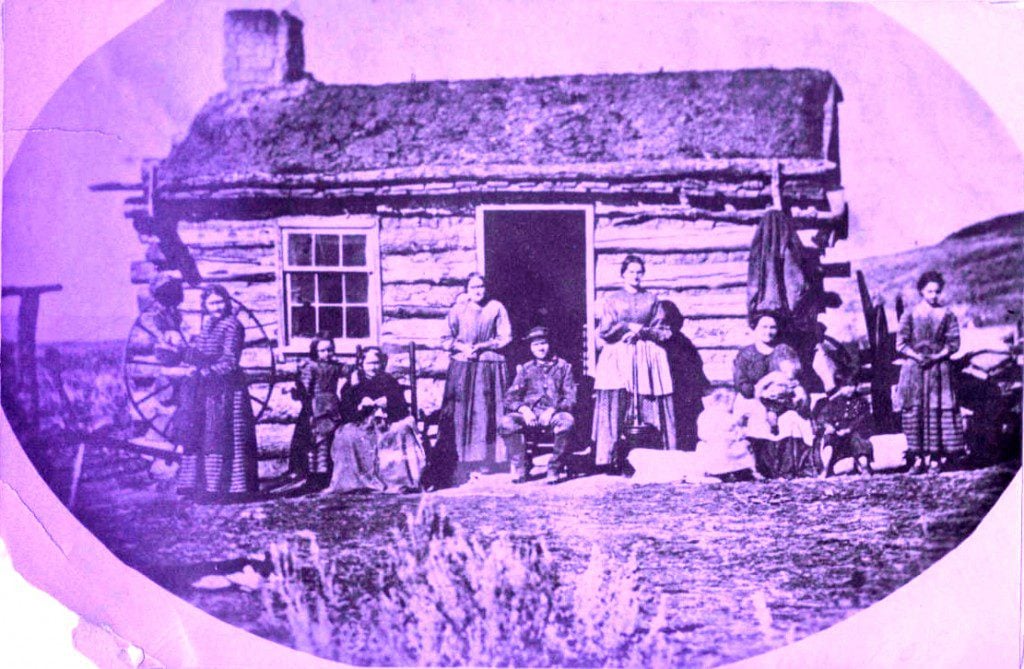
Confession: I actually really love the show Sister Wives. It is a pretty remarkable snapshot of American life that is uncommon, but it is also kind of an anti-reality show, designed not to hype up mundane existence into needless drama, but instead to normalize the lifestyle of the polygamist Brown family, proving that not all polygamists are cultish creeps like Warren Jeffs.
The problem, it appears, is that the mainstream Mormon church isn’t buying this show’s premise. The Browns are members of the Apostolic United Brethren, a breakoff of the Brighamite branch of Mormonism that severed ties with The Church of Jesus Christ of Latter-day Saints with the end of polygamy. Jeffs’ branch, the Fundamentalist Latter-day Saints—or FLDS—broke off around the same time, but the AUB, arguably the largest polygamist sect of Mormonism, established early on a practice of transparency and legal cooperation.
So one of the older children of the Brown clan, Madison, who from the show’s very first season has insisted that she has no interest in polygamy, sought membership in the mainstream LDS church. As a prerequisite she was asked not only to never practice polygamy, but to formally, or publically, renounce her polygamous family. Brown rightfully refused.
The LDS church rejecting me for my parents choices was one of the most devastating things I have been through.
— Madison (@MaddieR_Brown) October 12, 2015
This might seem like a totally arbitrary and petty policy, which it is. As By Common Consent pointed out, Madison’s commitment to monogamy has been a central theme since the show’s beginning. But this decision is rooted in the historical evolution of Mormonism from an obscure fundamentalist community to a mainstream part of America’s religious landscape. Rewind back to the 19th century, when Mormonism was viewed as an outsider, almost barbaric religion, isolated in the far west, where they freely practiced plural marriage in a semi-theocratic state.
But as American society moved westward, and Utah sought statehood, the practice was consistently challenged. In 1862, Congress passed the Morrill Anti-bigamy Act, outlawing all plural marriages within U.S. territory. But since Mormon polygamy was a largely spiritual matter, Mormons could easily ignore it. The following Edmunds Act in 1882 was far stricter, and targeted men guilty of cohabitation and financially supporting multiple households.
The continued pressure from the feds fractured Mormon leadership, who continued to practice polygamy up through the 1890 Manifesto. Polygamous families were still welcomed in the community, and new plural marriages continued in secret. Yet, the federal government would not let up on the Mormons, putting then prophet Joseph F. Smith in a difficult position. He could either abandon the defining practice of the religion founded by his father and uncle, preserving it for the new century, or hold fast to the doctrine, putting Mormonism in danger of legal obliteration under a strictly anti-polygamy government.
Whether by revelation or personal and political wisdom, Smith went with the former, and in 1904 the LDS Church promised full compliance with the Second Manifesto, a prophetic declaration that ended polygamy for good. As a means of enforcing this manifesto, the Church began excommunicating members who continued the practice, leading to the break off of groups like the AUB and FLDS. The doctrine of “the new and ever-lasting covenant,” which D&C 132 defines as plural marriage, was shifted to refer more broadly to eternal marriage. Around the same time, apostle Reed Smoot was sent to the United States Senate to represent Utah, resulting in a series of hearings that challenged the Church’s claims that they truly ended polygamy. Smoot, and Mormonism by proxy, won the Senate battle, and the LDS church’s long assimilation into American culture had begun. Within a few decades, Mormons would no longer be seen as radical outsiders, but prominent members of society with a strict adherence to traditional values.
Eventually, the Church’s relationship with polygamy came full circle, as Utah continually passed some of the harshest anti-bigamy laws in the country. In 1953, the Church actively cooperated with law enforcement behind a federal raid in Short Creek, Arizona that resulted in more than 200 children detained and taken from their families, some of whom never regained custody.
Part of the Church’s crackdown on polygamy included language in the temple recommend and baptism questions that focused on a members’ association with polygamist groups. That language remains, though it is a little vague. I suspect this is where the issue of Madison Brown’s relationship with her family becomes a problem regarding her LDS baptism. But there is also the fact that the LDS Church has been trying to distance itself from polygamy for over a century, and sometimes that quest can trump its devotion to family values. There’s no doubt that some FLDS communities are havens of abuse, but there is also no reason to suspect that polygamy itself is the cause or even a prominent indicator of such behavior, as the show Sister Wives has made its’ mission to prove.
While the show aired, Brown clarified on Twitter that the decision did NOT come from her mission president, but from The First Presidency itself, meaning, this is not just another case of leadership roulette. In an attempt to control the public image of the Church as separate from polygamy, regardless of its history, the Church instead put forth an image of unfair exclusivity. It is especially unfortunate given that this policy is at odds with some crucial Mormon doctrines, like the Second Article Faith which infers that the sins of our parents have no bearing on their children’s own salvation, and of course the belief that families are the fundamental and eternal unit of God’s kingdom. After all, there are in fact plenty of polygamist families on record in the LDS church. I don’t think the early polygamists’ descendants were required to denounce their fathers in order to maintain membership in the Church.
Like I said before, Brown is right to not accept baptism at the cost of her family. It’s just a shame that such an outdated and capricious policy has kept her from participating in the blessings The Church of Jesus Christ of Latter-day Saints promises; among them, an eternal binding the very family they have shamefully asked her to reject.











